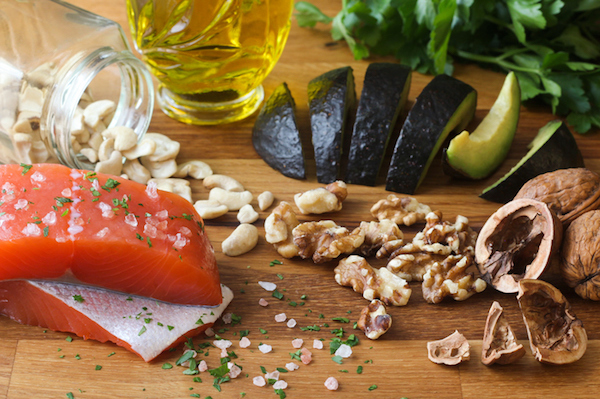
Omega-3’s & Our Health
These extremely useful fatty acids are important to our overall well-being and vital to our health
Omega-3’s are a popular trend in nutrition and have been for quite some time. This is a good thing because these extremely useful fatty acids are important to our overall well-being and vital to our health.
Unfortunately for some of us, “Americanized” diets do not provide enough Omega-3’s to sustain balanced nutrition. And neglecting your Omega-3’s can lead to a multitude of complications including hypertension and heart disease.
Omega-3’s & Our Health:
According to the Mayo Clinic’s website, “Omega-3 fatty acids are thought to provide a wide range of health benefits, including a lower risk of coronary heart disease and improvement in cholesterol. There have also been promising results from studies looking at Omega-3 for cancer, depression and attention-deficit hyperactivity disorder (ADHD).”
Other conditions Omega-3’s help fight off include:
- Rheumatoid Arthritis
- Memory loss
- Osteoporosis
Omega-3’s also provide several eye healthy benefits, which include reducing dry eye symptoms and slowing the progression of age related macular degeneration. Omega-3 consumption can also assist in the retinal development of infants and brain development in children.
Omega-3 Nutrition:
EPA/DHA and ALA are the two types of Omega-3 fatty acids. Eicosapentaenoic acid (EPA) and Docosahexaenoic acid (DHA) can be found in fatty fish. Alpha-linolenic acid (ALA) can be obtained from plant sources. Without question, the body can use both forms of Omega-3’s, but EPA/DHA is much easier to break down.
Food sources of Omega-3 fatty acids (EPA/DHA) include:
- Salmon
- Cod
- Sardines
- Herring
- Mackerel
- Sturgeon
- Lake Trout
- Tuna
Judging from this list, Omega-3’s (EPA/DHA) can be found in most fatty types of fish. However, some of these fish (such as tuna) contain high levels of mercury and/or other contaminates. With that in mind, it’s better to keep overall fish consumption at a minimum (maybe 2 or 3 times a week). Also, try to purchase wild-caught over farm-raised because farm-raised fish typically contains less nutrients and higher levels of contaminates.
Food sources of Omega-3 fatty acids (ALA) include:
- Chia seeds
- Flax seeds
- Walnuts
- Leafy greens
- Eggs
Omega-3 Supplementation:
From my perspective, it’s best to get the majority of Omega-3’s from food based sources. When this isn’t possible, supplementation is an option. When choosing the right supplements, there are several things to consider. For example, fish oil should be selected in triglyceride form because it’s much easier for the body to break down.
Make sure to consult with your primary care physician to see which supplements may be right for you.
Options for Omega-3 supplementation include:
- Fish oil
- Flaxseed oil
- Krill oil
- Cod liver oil
Live in Your OcularPrime:
The amount of Omega-3 nutrition received through supplementation shouldn’t exceed 2000mg per day. Too much Omega-3’s can lead to toxicity, which can thin the blood and/or cause bruising. It’s also best to make sure Omega-3 supplements are tested for contaminates (such as Mercury).







